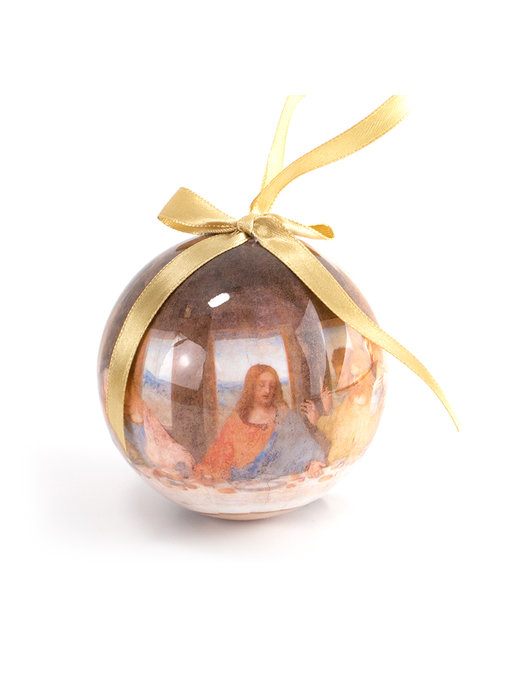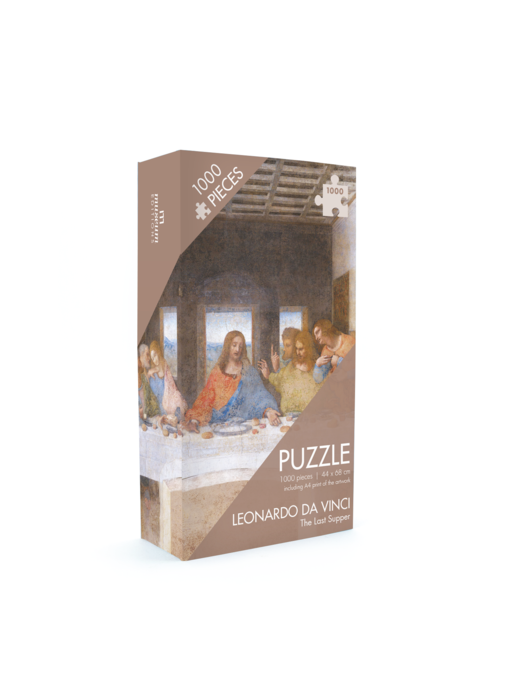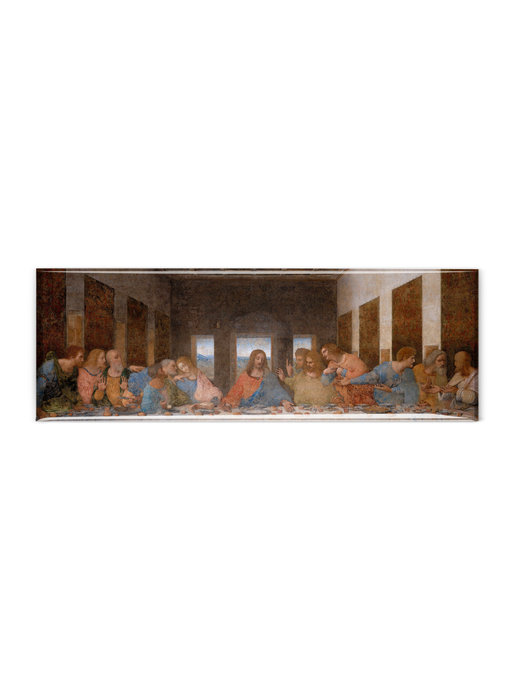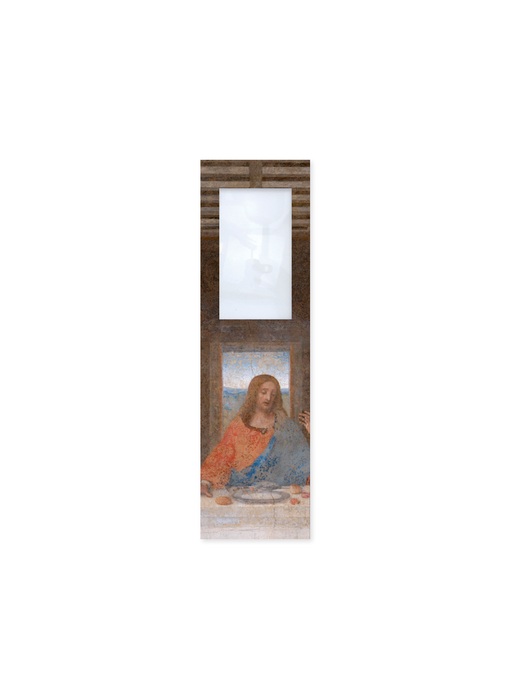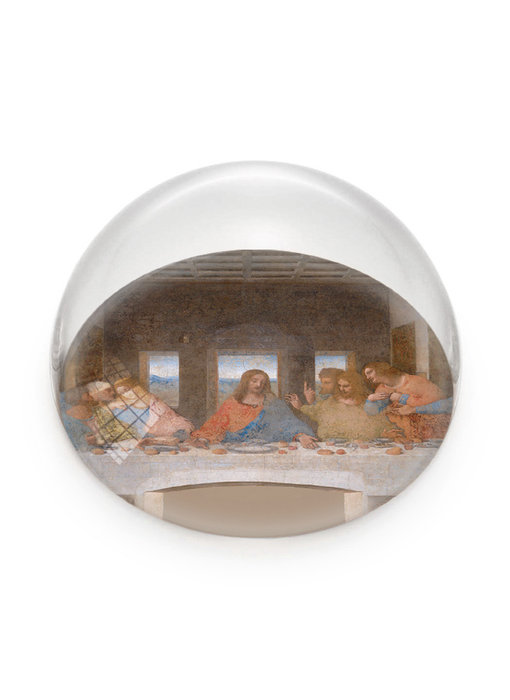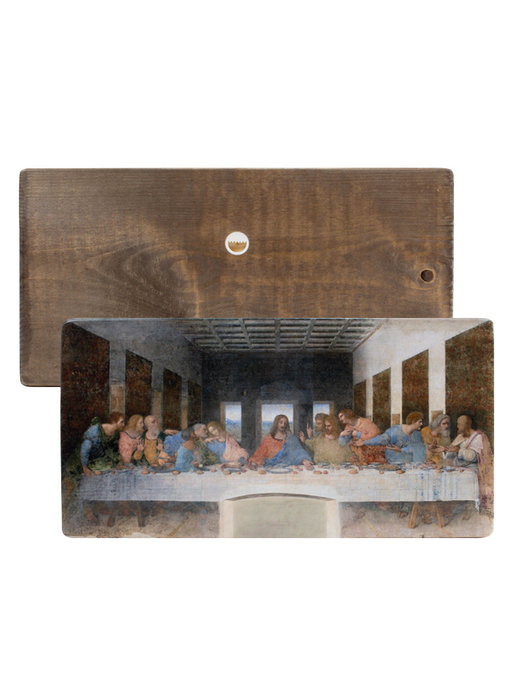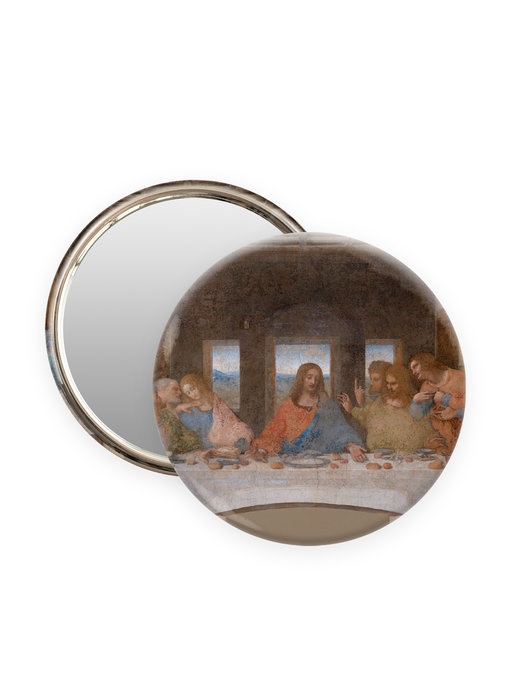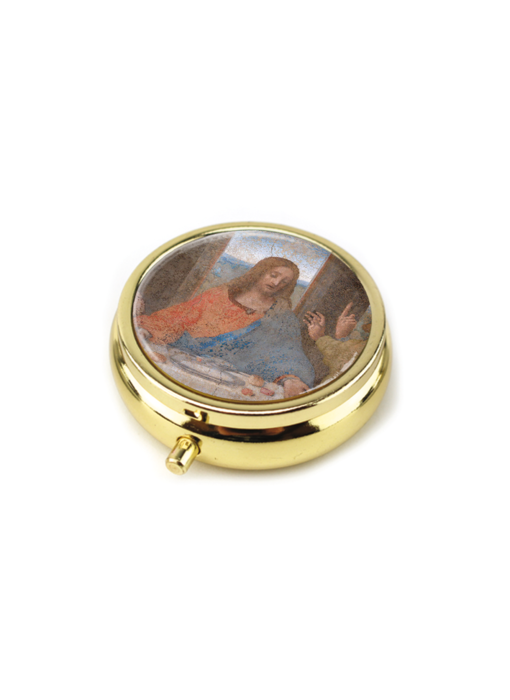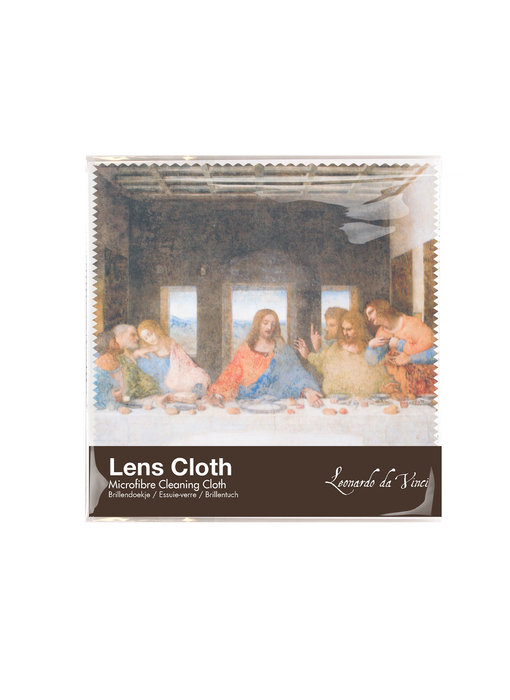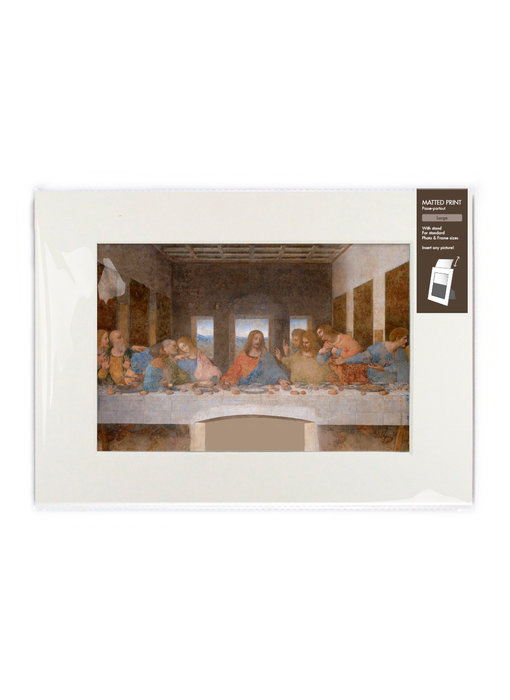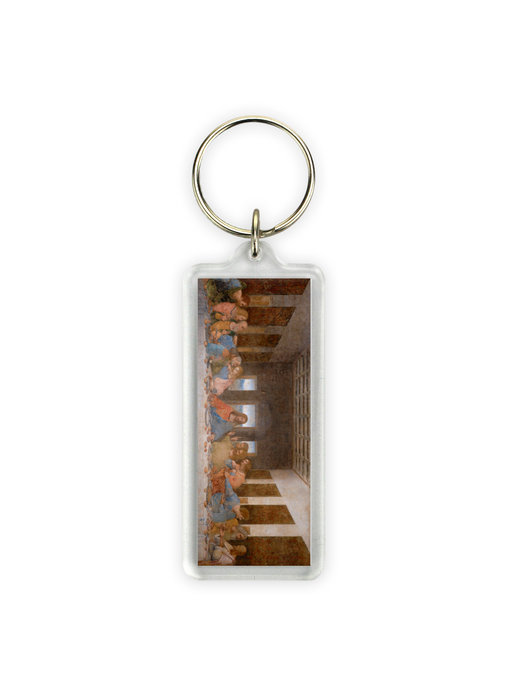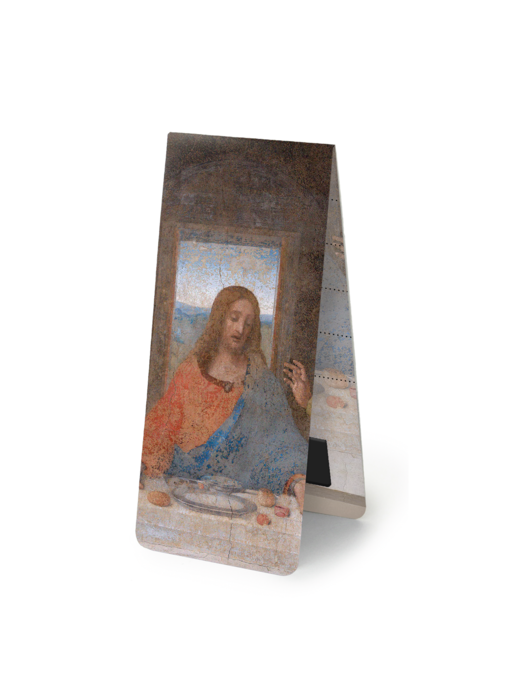This bauble features a reproduction of the famous fresc
Material: blue board
Size: 44 x 68 cm, 1000 pieces
Item number: TSJW000018
Brand: Museum editions
Dimensions: 4.2x11.8 cm
Material: magnet
Weight: +/- 25 grams
Item number: MFMW000327
Size 50x70 cm: fits in standard poster frames.
Black gift box: 100 x 100 x 50mm
Size A4: fits in standard frames.
Material: metal and laminated paper, and glass mirror
Weight: +/- 30 gram
Artikelnummer: APMW000052
Sizes: 297 x 210 x 4 mm,
Image dimensions: 208 x 137 mm, image insert dimensions: 230 x 160 mm
Material: White passe-partout cardstock, with black Kraft for the back and expander.
On the evening before his death, Jesus gathers his disciples for a last supper. He washes their feet as a sign of humility and predicts his own betrayal. During the meal he shares bread and wine as symbols of his body and blood. This biblical scene has often been depicted in the visual arts, with Leonardo da Vinci's Last Supper (ca. 1495/98) being an iconic example. His masterpiece is characterized by lively interaction between the characters, a breakthrough in the artistic representation of the subject. The fresco measures 460 x 880 cm and can be seen in the dining room of the Monastery of Santa Maria Delle Grazie in Milan. The theme was traditional for monastery dining rooms, but Leonardo's interpretation gave it much greater realism and depth. The lunettes at the top of the fresco are painted with Sforza's coat of arms. Opposite the fresco is another fresco of the crucifixion, painted by Donato Montorfano. Leonardo began work on the Last Supper in 1495 and completed it in 1498, although he did not work on the fresco continuously.
The Last Supper depicts the apostles' reactions when Jesus said that one of them would betray him. “They looked at each other, unsure who he meant,” the evangelist writes. All twelve apostles have different reactions to Da Vinci's announcement and are in various stages of anger and shock.



